-
DigiSensory cameras predict crime before it happens
With DigiSensory Technologies’ sophisticated cameras and sensor systems, law enforcement agencies and transportation departments across the United States are now able to proactively monitor and respond to crimes or accidents as they unfold; the company’s Avista sensors process the images that its 3.2 megapixel high-resolution camera records in real time and can automatically detect when a crime is occurring; when it senses something it will alert law enforcement officials instantly; the sensors can also assist transportation departments in analyzing traffic patterns in real time; the system could allow officials to change one way streets, design real time traffic signals, and multiple speed limits to make traffic flow more smoothly
-
-
Lockheed developing autonomous and covert rover
A surveillance robot aims to operate around humans without being detected by them; the machine uses a laser scanner to builds a 3D computer model of its surroundings and uses a set of acoustic sensors to distinguish the proximity and direction of footsteps
-
-
CT scans help doctors treat sniper wounds
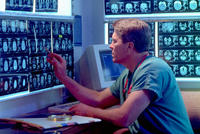
Determining a bullet or bomb fragment’s path through flesh and bone can help doctors treat injuries and decide which patients to prioritize; instead of relying solely on visual cues and a possibly deviated bullet path, researchers are working to develop high-resolution computed tomography (CT)-based methods of accurately determining a bullet’s trajectory
-
-
Smart traffic system to reduce first responder deaths
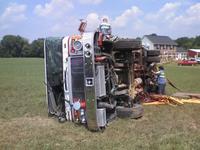
Nearly 13 percent of the firefighters and police officers who die in the line of duty are killed in vehicle-related incidents, and fire trucks are involved in 10 times as many collisions as other heavy truck; University of Arizona researchers have teamed up with the Maricopa County Department of Transportation (MCDOT) to create a system that will make intersections safer for emergency responders and the general public
-
-
U.S. works closely with Mexico to curb power of cartels
The United States is already involved in the spiraling violence which threatens to make Mexico into a failed state: hundreds of thousands of U.S.-made firearms are bought at U.S. gun shows and then smuggled into Mexico to arm the cartels; but there is another aspect to U.S. involvement: more and more American agents are operating in Mexico to stem the flow off drugs into the United States and curb the power of the cartels; U.S. agents generally provide intelligence and training, while Mexicans do the hands-on work; neither side will say exactly how many agents are in Mexico, citing security concerns
-
-
Border agent seizes student's laptop without warrant
On 1 May when a U.S. Customs and Border Protection agent stopped Pascal Abidor, an Islamic studies doctoral student at McGill University in Montreal, at Champlain, New York’s port of entry; the agent turned on Abidor’s computer and found a picture of a rally by the Hamas militant group, something he had downloaded from the Internet for schoolwork; Abidor’s life has not been the same since
-
-
Madison County, IL receives $260,000 in DHS grants
Two fire departments in Madison County, Illinois were recently awarded more than $260,000 in federal grants; the grants come as part of DHS’ Assistance to Firefighters program and goes toward the purchase of new safety gear and firefighting equipment; the Wood River fire department will receive $223,556 to help pay for a high-volume foam monitor as well as foam that will be used to put out chemical fires; the Rosewood Heights Fire Protection District will receive $37,050 to procure thirty sets of new protective fire suits
-
-
Ensuring cyber infrastructure in rural areas meet demand in emergencies
Research groups at the University of California, San Diego are building a scalable computer infrastructure to provide better access to camera feeds from rural areas when fires, earthquakes, flash floods, or other natural disasters hit San Diego County; approximately 1,000 people visit High Performance Wireless Research and Education Network’s (HPWREN) Web page to view camera feeds on a typical day. On a not-so-typical day — like when snow recently blanketed large swathes of rural San Diego mountaintops — the number of visitors quadrupled
-
-
Michigan law enables executives to privatize security
Michigan’s new Emergency Manager law, in addition to allowing previously negotiated union contracts to be voided, gives appointees the authority to privatize police services and jails; some are worried that the rush to cut police labor costs will impair public safety; critics say that savings from privatization are illusory
-
-
Sector Report for Tuesday, 22 March 2011: Law Enforcement Technology
This report contains the following stories.
Plus 1 additional story.
-
-
Sophisticated new police interceptors unveiled to replace Crown Vic
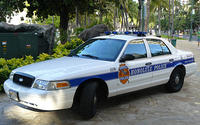
After serving police departments across the United States for nearly two decades, the Ford Crown Victoria police cruiser is finally set to be discontinued this year; police departments can look forward to several new models; Ford’s new car is at least 20 percent more fuel efficient than the previous model and offers higher performance; Chevy returns to the market with a powerful new interceptor that boasts a 355-horsepower 6.0-liter V8 engine; a small Indiana based firm will offer the E7 which comes with built-in license plate readers, infrared cameras, and biological threat detectors that will be able to determine the presence of biological, chemical, radiological, or nuclear threats
-
-
New software matches sketches to mug shots
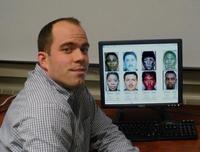
Police will be given big help in trying to match to portraits of suspects drawn up by police sketch artist to mug shots in the police database; Michigan State University researchers developed a software program that “reads” facial details and matches them to mug shots in a central database; using techniques that describe lines and shading in small patches of sketches, the researchers were able to develop the algorithms for the software
-
-
Automatic license plate reader helps Jersey police fight crime
The Evesham, New Jersey police department recently installed a high tech automatic license plate reader on one of its squad cars; the license plate reader, attached to the outside of a police car, relies on an infrared camera to photograph license plates and automatically runs it through several databases; the searches are designed to alert officers if the plates are linked to criminals, unregistered vehicles, or unpaid fines; in one month, Evesham police scanned 69,000 plates, returning 1,400 alerts of interest including several unregistered vehicles that led to large narcotics busts; officers see this technology as way to increase efficiency and do more with less given budget constraints
-
-
First response, law enforcement ground robot market to grow
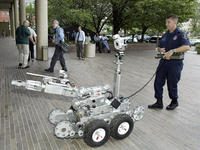
The current market for first responder and law enforcement ground robots is estimated at $203 million; just-published research says that the market is poised for a significant growth; first responder robots cost about $50,000 and up, which is the cost of a person for one year; the challenge for vendors is thus to find applications where the robot is used 24x7 365 days per year
-
-
Precision parachute system for pin-point delivery of sensitive loads

Military units often operate behind enemy lines, and disasters often sever transportation links; in both cases, the provision of supplies — military or humanitarian — is a major issue; now there is a solution; the manufacturer says that the precision air-cargo parachute — classified as a UAV becasue of its navigation capabilities — is the only commercially available system in the world that can ensure the pin-point delivery of sensitive mission equipment, humanitarian aid, and supplies fully automatically from the air without damage
-
More headlines
The long view
Why Was Pacific Northwest Home to So Many Serial Killers?
Ted Bundy, Gary Ridgway, George Russell, Israel Keyes, and Robert Lee Yates were serial killers who grew up in the Pacific Northwest in the shadow of smelters which spewed plumes of lead, arsenic, and cadmium into the air. As a young man, Charles Manson spent ten years at a nearby prison, where lead has seeped into the soil. The idea of a correlation between early exposure to lead and higher crime rates is not new. Fraser doesn’t explicitly support the lead-crime hypothesis, but in a nimble, haunting narrative, she argues that the connections between an unfettered pollution and violent crime warrant scrutiny.
Bookshelf: Smartphones Shape War in Hyperconnected World
The smartphone is helping to shape the conduct and representation of contemporary war. A new book argues that as an operative device, the smartphone is now “being used as a central weapon of war.”
